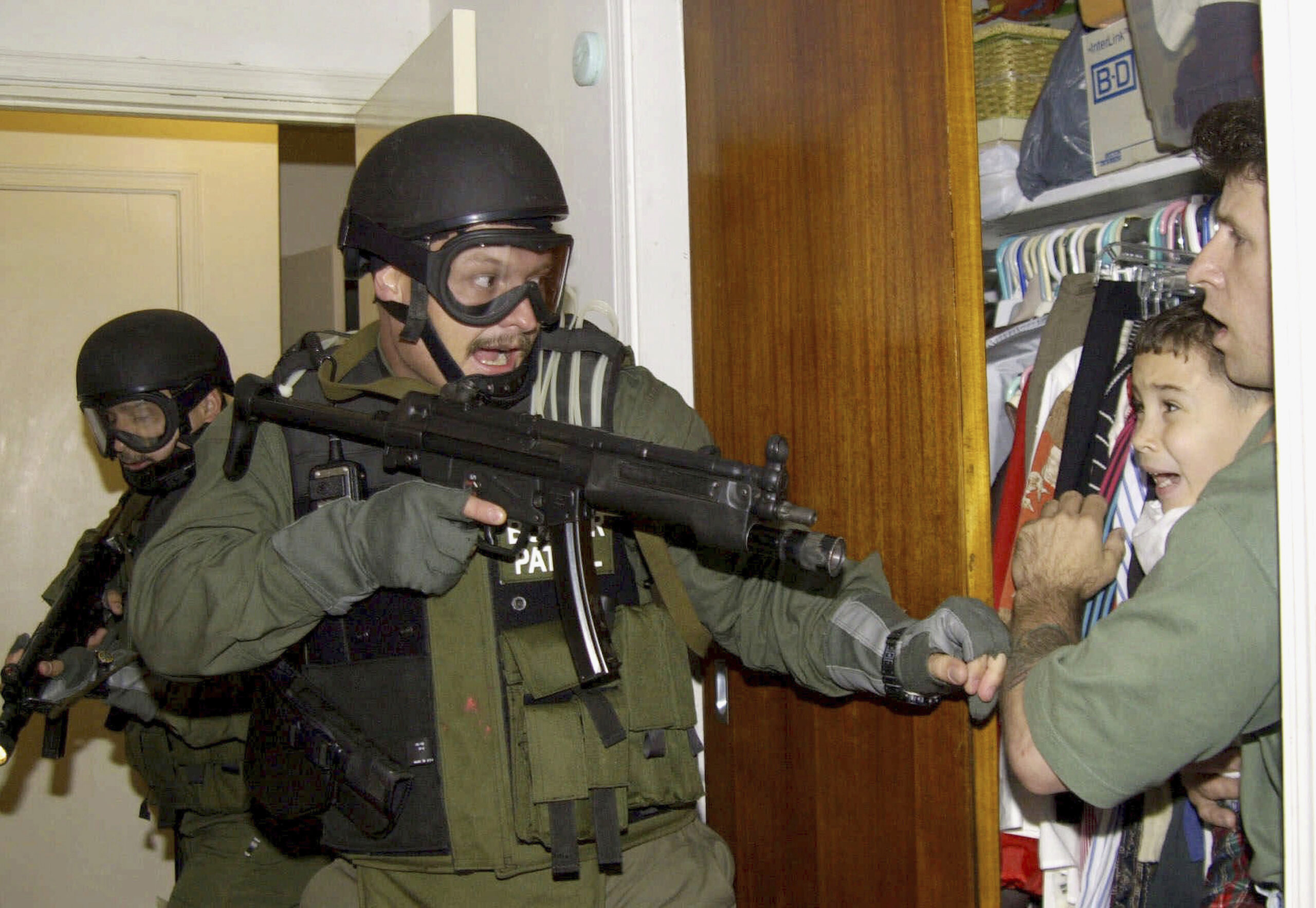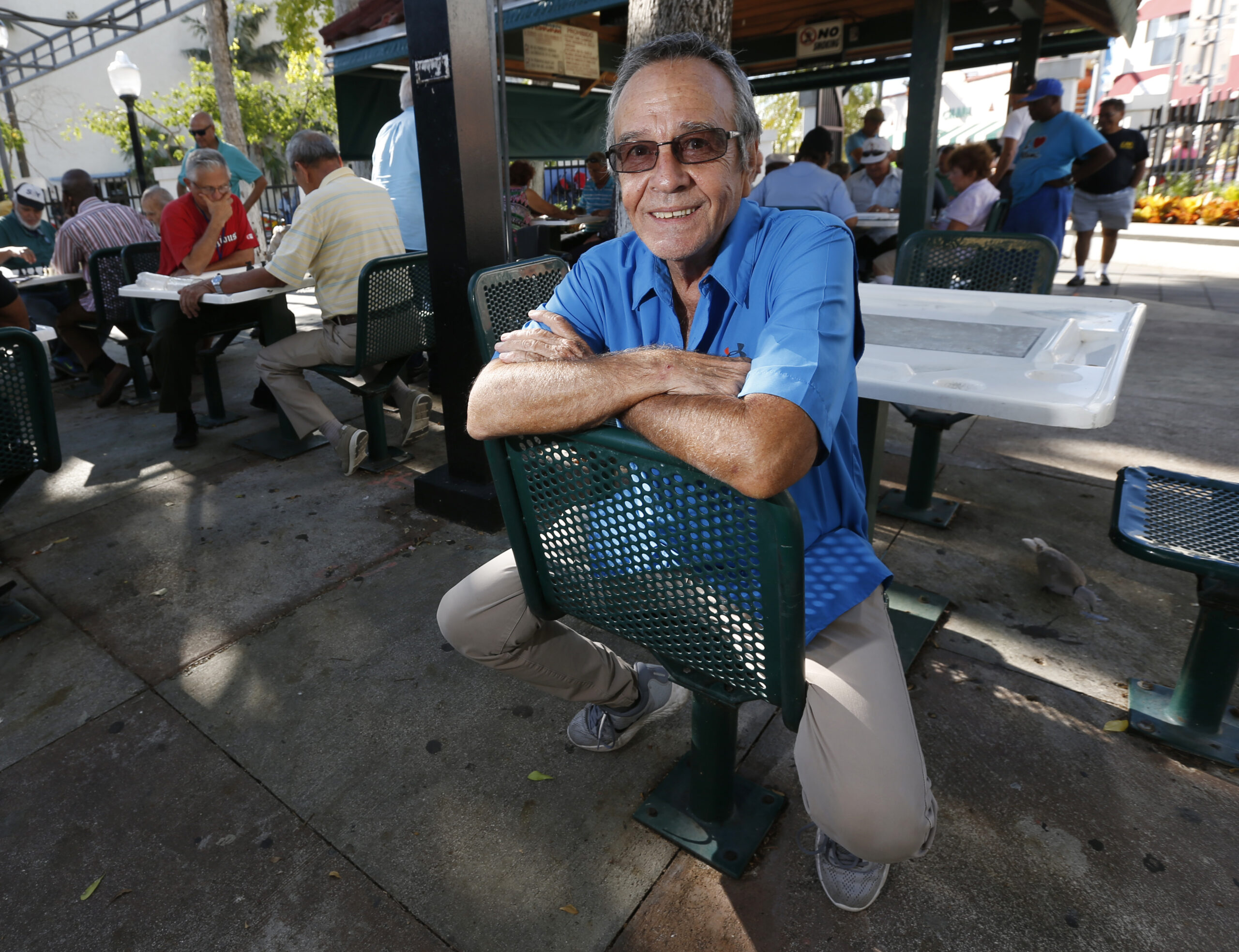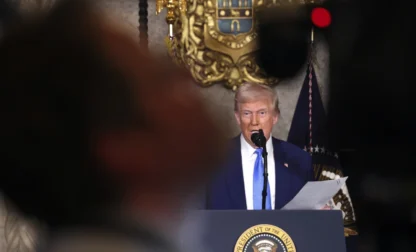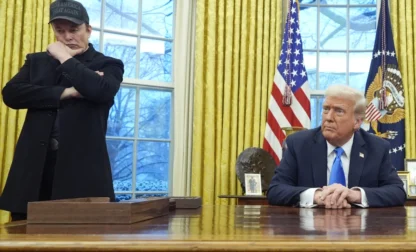By JENNIFER KAY, The Associated Press


MIAMI (AP) — Associated Press photojournalist Alan Diaz, whose coverage of a 6-year-old Cuban boy named Elian Gonzalez earned him the Pulitzer Prize, is retiring after 17 years.
Diaz’s iconic image shows an armed U.S. immigration agent confronting the terrified boy in the Little Havana home where he lived with relatives for months after being found floating in the waters off Florida.
Diaz agreed to an interview about his career on one condition: He’d only talk over cafecito in Little Havana.
The Miami neighborhood is the heart of the Cuban-American community. It’s where Diaz started his U.S. photography career. It’s where he earned a Pulitzer Prize. It’s home.
“The Cuban story is a fantastic story,” he said over Cuban coffee at the landmark Versailles restaurant in late October. “Just to see the people, how they’re passionate. I love this story.”
Diaz will retire Dec. 1.
He was freelancing for AP when a boater found a 5-year-old Cuban boy floating in an inner tube in the waters off Fort Lauderdale on Thanksgiving Day 1999.
He would be the only photojournalist to capture the moment five months later when U.S. immigration agents ended a bitter international custody battle with a pre-dawn Good Friday raid, pulling a terrified Elian Gonzalez from his uncle’s Little Havana home so he could be returned to his father in Cuba.
Diaz said he was just in the right place at the right time.
He had spent months chatting with Gonzalez’s relatives and neighbors over cafecito and cigarettes, earning their trust by respecting an order from the boy’s uncle to not speak to the child.
Diaz was there as the boy lived a normal life: hanging Christmas decorations, celebrating his 6th birthday, going to school and playing in the fenced-in yard not far from Miami’s famous Calle Ocho.
His constant presence also allowed him to pick up clues that the boy’s time in Miami was coming to an end: the large number of black vehicles gathered at a nearby high school, a man claiming to be a journalist but only wanting to know the layout of the house, praise from plainclothes police officers that sounded suspiciously like a farewell.
When he heard a radio call that the raid had begun, Diaz jumped a fence and was ushered into the house by a friend of Gonzalez’s relatives. Huddled with relatives in a bedroom, the terrified boy asked Diaz, “What’s happening? What’s happening?” Aiming his camera at the bedroom door, Diaz tried to soothe the child, saying, “Nothing’s happening, it’s going to be all right.”
Moments later, armed federal agents wearing tactical gear burst inside to find the crying boy in the arms of the Cuban boater who had rescued him. Diaz later handed off his memory card without checking the images in the screen on the back of his digital camera — he just called AP’s photo editor in Miami and said, “I got the shot.”
After the image hit the wires and network television news, Diaz saw how both Cuban leader Fidel Castro and Cuban-American community leaders used it to argue that the other side was brutal and heartless.
“I have no opinion on it. I shot the moment. That’s all,” Diaz said. “Good or bad, that’s what happened that morning.”
AP hired Diaz as a staff photographer two months after the raid, sending him to cover sporting events such as the Super Bowl, hurricanes, the aftermath of Sept. 11, elections and breaking news. After winning the Pulitzer Prize in 2001, he was awed by the celebration from his heroes in photojournalism.
“Joe Rosenthal wanted to meet me? Wow,” Diaz said, still shaking his head at being honored by the AP photojournalist who produced the iconic image of U.S. Marines and a Navy sailor raising the American flag over Iwo Jima.
Diaz was born in New York to Cuban parents. He spent his adolescence in Cuba, where he studied photography with Alberto Korda, whose 1960 portrait of Marxist revolutionary Che Guevara became one of the most reproduced images in history.
In 1978, he moved to Miami and began shooting in Little Havana for Cuban-American organizations and publications. One memorable assignment was a meeting of leaders of anti-Castro efforts and Frank Sturgis, one of the Watergate burglars, who had fought alongside Castro in Cuba before turning against him.
Diaz may be retiring, but he says he’s not giving up his Little Havana routine: cafecito and spirited conversations tracking the latest Cuban passions.
“They’re very emotional about things — everything. From baseball to Castro to the government. Like, their food is the best in the world, their baseball is the best in the world. When it comes to their problems, you know, they have the biggest problems in the world.”




